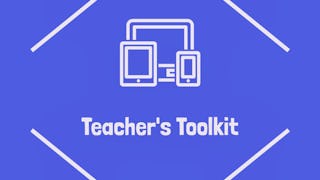This course is designed for entry-level construction professionals, project engineers, estimators, and those looking to enter the construction industry with a solid foundation in reading construction documents. It is also appropriate for designers, architects, and project managers seeking to better understand how drawings and specifications communicate project requirements.



Plan Reading and Specifications
Ce cours fait partie de Spécialisation Estimating and Bidding in Construction

Instructeur : Hitesh G. Dewan
Inclus avec 
Compétences que vous acquerrez
- Catégorie : Submittals (Construction)
- Catégorie : Structural Engineering
- Catégorie : Engineering Plans And Specifications
- Catégorie : Plumbing
- Catégorie : Coordination
- Catégorie : Architectural Drawing
- Catégorie : Engineering Drawings
- Catégorie : Building Codes
- Catégorie : Design Specifications
- Catégorie : Mechanical Drawings
- Catégorie : Blueprint Reading
- Catégorie : Construction
- Catégorie : Electrical Systems
Détails à connaître

Ajouter à votre profil LinkedIn
septembre 2025
Découvrez comment les employés des entreprises prestigieuses maîtrisent des compétences recherchées

Élaborez votre expertise du sujet
- Apprenez de nouveaux concepts auprès d'experts du secteur
- Acquérez une compréhension de base d'un sujet ou d'un outil
- Développez des compétences professionnelles avec des projets pratiques
- Obtenez un certificat professionnel partageable

Il y a 7 modules dans ce cours
In this module, you’ll begin by connecting a project’s drawings to the real-world structures they represent. You’ll explore how to read a set of plans with an eye for orientation, layout, and building relationships, and you’ll practice identifying how those drawings align with what will be built on site. You’ll also learn how plans differ from specifications (specs) — and why both are essential for accurately communicating design intent and construction requirements. We’ll also discuss the purpose, process, and people involved in producing and using construction documents, giving you a clear view of how information flows from design to construction. Your hands-on “napkin sketch” activity will give you a low-stakes way to start thinking in plan view, using a familiar space to practice representing 3D reality in 2D drawings. This foundational exercise will help you develop spatial awareness, understand orientation, and start working with basic plan-reading conventions.
Inclus
13 vidéos2 lectures2 devoirs1 plugin
Construction drawings use scales, lines, and symbols to translate a physical building into a two-dimensional plan. In this module, you’ll learn how to read these visual codes so you can accurately interpret what the drawings are communicating. You’ll explore graphic and numeric scales, practice converting between them, and see how different disciplines use symbols in their plans. You’ll also learn how legends tie it all together, giving you a quick reference for interpreting information consistently. By the end, you’ll be able to confidently read and apply scales, lines, and symbols to extract key details from a set of drawings.
Inclus
10 vidéos2 devoirs1 plugin
Drawings show you the “what” and “where” of a building—but specifications provide the critical “how” and “with what.” In this module, you’ll explore how specifications complement plans by describing materials, installation methods, and performance requirements. You’ll learn how specifications are structured, how to locate key information in a section, and how to connect those requirements back to the drawings. We’ll also introduce you to common construction materials and their basic properties, helping you see how choices in specs influence both design and cost. By the end, you’ll be able to read a sample specification section, identify essential material requirements, and explain how specifications work together with plans to communicate the full project scope.
Inclus
18 vidéos2 devoirs1 sujet de discussion1 plugin
Every construction project involves multiple disciplines, and each has its own way of communicating critical information through drawings. In this module, you’ll explore how to read and interpret general, civil, landscape, and architectural sheets, paying close attention to the similarities and differences across each discipline. You’ll practice identifying standard views such as floor plans, site plans, sections, and elevations, and learn to extract information about layout, orientation, materials, and spatial relationships. By the end, you’ll be able to navigate these sheets with greater confidence and connect them back to specifications and the broader project scope.
Inclus
16 vidéos2 devoirs1 plugin
In this module, you’ll dive into the technical heart of construction drawings: the structural, mechanical, electrical, plumbing, and fire sprinkler systems. Each discipline brings unique information essential to understanding how a building is designed and constructed. You’ll learn to identify structural components like beams and columns, follow ductwork and piping routes, interpret electrical layouts, and recognize fire protection systems. You’ll also practice looking for conflicts and overlaps, building on the coordination skills from Module 4. By the end of this module, you’ll be able to navigate these critical systems with greater confidence, interpret their symbols and line types, and understand how they integrate with architectural plans to form a complete picture of the project.
Inclus
17 vidéos2 devoirs1 plugin
In this module, you’ll explore the critical role of trade coordination and learn how Division 09 (Finishes) connects across multiple disciplines. Finishes may look simple on the surface—paint, flooring, ceilings—but in reality, they require tight coordination with framing, MEP, and structural elements to ensure everything fits and functions as intended. You’ll practice reading and interpreting finish schedules, symbols, and notes, and see how they tie into both drawings and specifications. By the end of this module, you’ll understand how Division 09 documents guide the selection and installation of finishes, and why accurate coordination across trades is essential to achieving quality and efficiency on a project.
Inclus
10 vidéos1 lecture2 devoirs1 plugin
In this final module, you’ll learn how to interpret keynotes, details, and elevations — three essential tools that add precision to construction documentation. Keynotes tie symbols and notes to specific requirements; details zoom in on connections, assemblies, and critical conditions; and elevations show vertical relationships that aren’t always clear in plan views. Together, they provide the depth needed to fully understand how a project will be built. By the end of this module, you’ll be able to connect keynotes and details back to plans and specifications, and confidently read elevations to see how design intent translates into real-world construction.
Inclus
7 vidéos2 devoirs1 plugin
Obtenez un certificat professionnel
Ajoutez ce titre à votre profil LinkedIn, à votre curriculum vitae ou à votre CV. Partagez-le sur les médias sociaux et dans votre évaluation des performances.
Instructeur

Offert par
En savoir plus sur Business Essentials

Coursera Project Network
 Statut : Essai gratuit
Statut : Essai gratuitColumbia University
 Statut : Essai gratuit
Statut : Essai gratuitColumbia University
 Statut : Essai gratuit
Statut : Essai gratuitGoodwill Industries International
Pour quelles raisons les étudiants sur Coursera nous choisissent-ils pour leur carrière ?





Ouvrez de nouvelles portes avec Coursera Plus
Accès illimité à 10,000+ cours de niveau international, projets pratiques et programmes de certification prêts à l'emploi - tous inclus dans votre abonnement.
Faites progresser votre carrière avec un diplôme en ligne
Obtenez un diplôme auprès d’universités de renommée mondiale - 100 % en ligne
Rejoignez plus de 3 400 entreprises mondiales qui ont choisi Coursera pour les affaires
Améliorez les compétences de vos employés pour exceller dans l’économie numérique
Foire Aux Questions
To access the course materials, assignments and to earn a Certificate, you will need to purchase the Certificate experience when you enroll in a course. You can try a Free Trial instead, or apply for Financial Aid. The course may offer 'Full Course, No Certificate' instead. This option lets you see all course materials, submit required assessments, and get a final grade. This also means that you will not be able to purchase a Certificate experience.
When you enroll in the course, you get access to all of the courses in the Specialization, and you earn a certificate when you complete the work. Your electronic Certificate will be added to your Accomplishments page - from there, you can print your Certificate or add it to your LinkedIn profile.
Yes. In select learning programs, you can apply for financial aid or a scholarship if you can’t afford the enrollment fee. If fin aid or scholarship is available for your learning program selection, you’ll find a link to apply on the description page.
Plus de questions
Aide financière disponible,
¹ Certains travaux de ce cours sont notés par l'IA. Pour ces travaux, vos Données internes seront utilisées conformément à Notification de confidentialité de Coursera.

